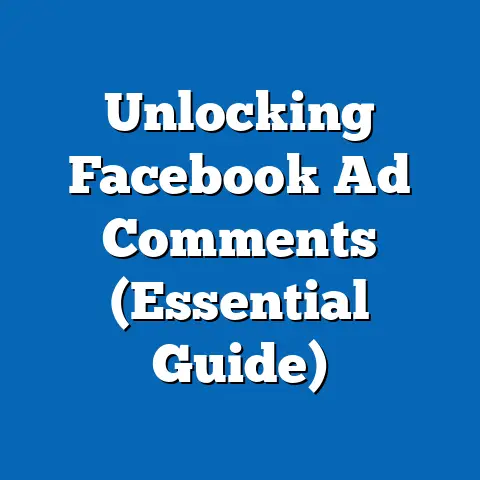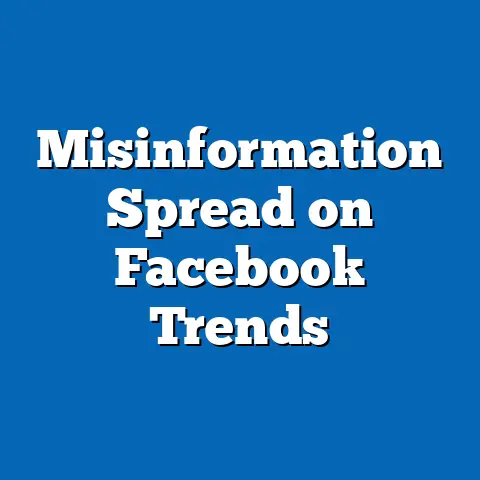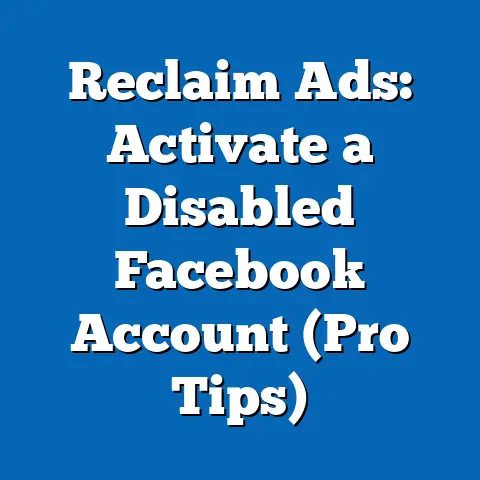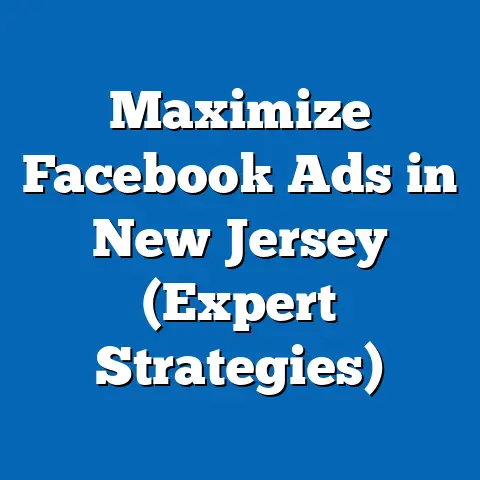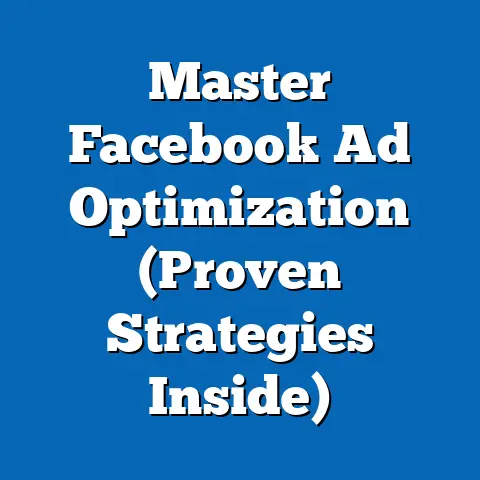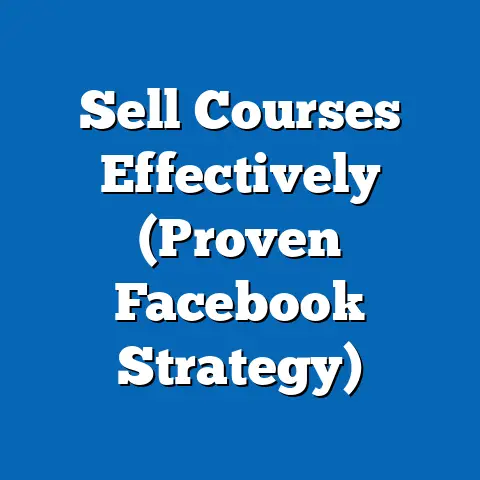Turn Upload Emails into Winning Facebook Ads (Pro Strategy)
I remember when I first started running Facebook ads, it felt like throwing spaghetti at the wall and hoping something would stick. I spent countless hours tweaking targeting options, crafting ad copy, and experimenting with visuals, often with disappointing results. Then, one day, I stumbled upon a goldmine hidden in plain sight: my customer upload emails.
Imagine this: Alex, a busy entrepreneur, runs a thriving e-commerce store from a cozy home office, filled with plants and motivational posters. The sun streams through the window as Alex sips coffee, reflecting on the latest marketing strategies. Despite the hustle and bustle of daily responsibilities, Alex knows that success hinges on effective advertising. Suddenly, a notification pops up: a slew of emails from recent customers, filled with feedback and insights. This moment sparks the realization that these uploads can be transformed into powerful Facebook ads, driving engagement and conversions.
Understanding the Goldmine of Upload Emails
Upload emails are automated messages sent to your business when customers interact with your products or services. These emails often include valuable data such as reviews, customer stories, frequently asked questions, and even direct feedback on their experience. They are a treasure trove of information that can provide a deep understanding of your customer base.
Think about the last time you received an upload email. Was it a glowing review praising your product’s quality? Or perhaps a customer sharing their unique experience and how your product solved a specific problem for them? These are the nuggets of gold we’re looking for.
Here are some examples of typical content found in upload emails:
- Customer Reviews: These are direct testimonials about your product or service, highlighting its strengths and weaknesses.
- Customer Stories: These provide a narrative perspective on how your product or service impacts customers’ lives.
- Frequently Asked Questions (FAQs): These reveal common concerns and questions that customers have, giving you insights into their thought process.
- Direct Feedback: This includes suggestions, complaints, or general comments about the customer experience, offering valuable insights into areas for improvement.
The key takeaway here is that upload emails offer a direct line to your customers’ thoughts and feelings. By analyzing this data, you can gain a deeper understanding of their needs and preferences, which is essential for creating ads that truly resonate.
The Psychology of Effective Advertising
Effective advertising isn’t just about showcasing your product or service; it’s about understanding the psychology behind why people buy. Emotions play a significant role in purchasing decisions, and ads that trigger the right emotions are more likely to capture attention and drive conversions.
One of the most effective ways to tap into customer emotions is by addressing their pain points. What problems are they facing? What challenges are they trying to overcome? By understanding these pain points, you can craft ad copy that speaks directly to their needs and offers your product or service as a solution.
Storytelling is another powerful tool in advertising. People are naturally drawn to stories, and ads that tell a compelling narrative are more likely to engage viewers. Your upload emails are a fantastic source of customer stories. Use these stories to create ads that showcase the real-life impact of your product or service.
For example, let’s say you sell a weight loss program. Instead of simply stating the benefits of your program, you could create an ad featuring a customer who lost weight and regained their confidence. Share their story, highlight their struggles, and show how your program helped them achieve their goals. This type of ad is much more likely to resonate with potential customers than a generic product advertisement.
Aligning your ad messaging with the audience’s values and interests is also crucial. Understand what your customers care about and tailor your ads accordingly. This can be anything from environmental sustainability to social justice. By demonstrating that your brand shares their values, you can build trust and loyalty, which can lead to increased sales.
Crafting Winning Facebook Ads from Upload Emails
Now, let’s get into the nitty-gritty of crafting winning Facebook ads from your upload emails. This process involves three key steps: analyzing the data, developing ad copy, and designing eye-catching visuals.
Step 1: Analyzing the Data
The first step is to sift through your upload emails and extract actionable insights. This can be a time-consuming process, but it’s well worth the effort. I typically use a spreadsheet to organize the data, categorizing it based on key themes and audience segments.
- Gather Your Emails: Collect all your upload emails from various sources, such as customer reviews, feedback forms, and direct messages.
- Create a Spreadsheet: Set up a spreadsheet with columns for categories like “Customer Segment,” “Pain Point,” “Benefit,” “Quote,” and “Visual Idea.”
- Read and Categorize: Go through each email and extract relevant information, filling in the corresponding columns in your spreadsheet.
- Identify Themes: Look for recurring themes and patterns in the data. What are the most common pain points? What benefits do customers consistently mention?
- Prioritize Information: Focus on the insights that are most relevant to your target audience and align with your marketing goals.
For example, let’s say you sell organic skincare products. After analyzing your upload emails, you might find that a common pain point is sensitive skin and the desire for natural, chemical-free solutions. You might also find that customers frequently praise the product’s gentle formula and its ability to soothe irritated skin. This information can be used to create targeted ads that address these specific pain points and highlight the product’s benefits.
Step 2: Developing Ad Copy
Once you’ve analyzed your data, it’s time to develop compelling ad copy that resonates with your target audience. This involves transforming your insights into persuasive messages that capture attention and drive action.
Here’s a framework for crafting effective ad copy:
- Start with a Hook: Grab the reader’s attention with a compelling headline or opening sentence. This could be a question, a statistic, or a surprising statement.
- Address the Pain Point: Clearly identify the problem that your product or service solves. Show that you understand their struggles and empathize with their situation.
- Highlight the Benefit: Explain how your product or service can provide a solution and improve their lives. Focus on the tangible results they can expect to achieve.
- Include a Customer Quote: Add a quote from a satisfied customer to build credibility and social proof. This shows that real people have benefited from your product or service.
- Use a Clear Call-to-Action (CTA): Tell the reader exactly what you want them to do next. Use strong action verbs like “Shop Now,” “Learn More,” or “Get Started.”
For example, using the skincare product example, your ad copy might look something like this:
“Tired of skincare products that irritate your sensitive skin? 🌿 Our organic formula is gentle, chemical-free, and designed to soothe even the most delicate skin. ✨ ‘I’ve struggled with redness and irritation for years, but this product has completely transformed my skin!’ – Sarah J. Shop now and experience the difference! 👇”
Notice how this ad copy starts with a hook that addresses a common pain point, highlights the product’s benefits, includes a customer quote, and ends with a clear CTA.
Step 3: Designing Eye-Catching Visuals
Visuals play a crucial role in the success of Facebook ads. A compelling image or video can capture attention, communicate your message effectively, and drive engagement.
Here are some tips for selecting visuals that complement your ad copy:
- Use High-Quality Images: Choose images that are clear, well-lit, and visually appealing. Avoid blurry or pixelated images that can detract from your message.
- Showcase Your Product: If you’re selling a physical product, showcase it in a visually appealing way. Use lifestyle shots that demonstrate how the product can be used in real-life situations.
- Use User-Generated Content (UGC): Incorporate photos or videos from your customers. This adds authenticity and social proof to your ads.
- Maintain Brand Consistency: Ensure that your visuals align with your brand’s aesthetic and messaging. Use consistent colors, fonts, and imagery.
- Experiment with Ad Designs: Don’t be afraid to try different ad designs and formats to see what resonates best with your audience.
For the skincare product example, you could use a photo of a customer with glowing, healthy skin, or a video testimonial where they share their positive experience with your product. You could also use a lifestyle shot of someone using your product in a relaxing setting.
Targeting the Right Audience on Facebook
Creating compelling ad copy and visuals is only half the battle. To truly succeed with Facebook advertising, you need to target the right audience. This involves identifying the specific demographics, interests, and behaviors of your ideal customers.
Your upload emails can provide valuable insights into your audience segments. By analyzing the data, you can identify common characteristics and preferences that can be used to create targeted ad campaigns.
Here are some strategies for creating custom audiences based on email interactions and customer data:
- Upload Your Email List: Upload your customer email list to Facebook to create a custom audience. This allows you to target your existing customers with tailored ads.
- Create Lookalike Audiences: Use Facebook’s lookalike audiences feature to expand your reach and target people who share similar characteristics with your existing customers.
- Target Based on Interests and Behaviors: Use Facebook’s targeting options to reach people who have expressed interest in your industry, products, or services.
- Target Based on Demographics: Target people based on their age, gender, location, education, and other demographic factors.
For the skincare product example, you could create a custom audience of people who have purchased your products in the past, or a lookalike audience of people who share similar characteristics with your existing customers. You could also target people who have expressed interest in organic skincare, sensitive skin, or natural beauty products.
Measuring Success and Optimizing Ads
Once your ads are running, it’s essential to track their performance and make data-driven adjustments. This involves monitoring key performance indicators (KPIs) and A/B testing different ad creatives and copy.
Here are some KPIs to track the success of your Facebook ads:
- Click-Through Rate (CTR): This measures the percentage of people who click on your ad after seeing it.
- Conversion Rate: This measures the percentage of people who take a desired action, such as making a purchase, after clicking on your ad.
- Cost Per Acquisition (CPA): This measures the cost of acquiring a new customer through your ad campaign.
- Return on Ad Spend (ROAS): This measures the revenue generated for every dollar spent on advertising.
A/B testing involves creating two versions of an ad with slight variations and testing them against each other to see which performs better. This can be used to test different headlines, images, or CTAs.
Facebook Ads Manager provides a wealth of data and analytics that can be used to monitor performance and make informed decisions. Use this tool to track your KPIs, identify areas for improvement, and optimize your ad campaigns for maximum ROI.
The key takeaway here is that Facebook advertising is an ongoing process of experimentation and optimization. By continuously monitoring your results and making data-driven adjustments, you can improve your ad performance and achieve your marketing goals.
The Future of Facebook Advertising
As digital marketing continues to evolve, personalization will become increasingly important. Customers are demanding more personalized experiences, and businesses that can deliver on this expectation will have a significant advantage.
By turning upload emails into winning Facebook ads, you can create authentic connections with your customers and drive business growth. This strategy allows you to tap into the power of customer insights, emotional triggers, and targeted messaging to create ads that truly resonate with your audience.
I remember when I first implemented this strategy, I was amazed at the results. My ad engagement skyrocketed, my conversion rates soared, and my overall marketing ROI increased significantly. It was a game-changer for my business, and I’m confident that it can be a game-changer for yours too.
So, take the time to analyze your upload emails, craft compelling ad copy, design eye-catching visuals, and target the right audience. By doing so, you can unlock the hidden potential of your customer data and create Facebook ads that deliver real results. The future of Facebook advertising is personalized, authentic, and data-driven. Are you ready to embrace it?

